原文
https://www.quora.com/What-is-does-20-and-30-mean-in-URL
引言
The %20 and %30 in a URL you are referring to is what’s known as URL encoding converts. URL encoding converts characters into a format that can be transmitted over the Internet.
URL當中的%20和%30 是用來識別其編碼轉化格式的,URL 編碼將字符轉換成可以在互聯網上傳輸的格式。
比如很多博客網站出來的連接會有類似下面的格式:
[https://blog.csdn.net/weixin_36242811/article/details/8921614...中類獲取同級文件&spm=1000.2123.3001.4430]
其中 %20 就是被轉化過的編碼格式。
有意思的是,如果我們把 %20 放到IDEA 全局搜索,會發現有很多編程語言會處理這種”特殊情況“:
比如jquery.js 會做下面的處理:
// Change '%20' to '+' if this is encoded form body content (gh-2658)
} else if ( s.data && s.processData &&
( s.contentType || "" ).indexOf( "application/x-www-form-urlencoded" ) === 0 ) {
s.data = s.data.replace( r20, "+" );
}在比如hutool中的方法對於空格進行特殊編碼:
/**
* 單獨編碼URL中的空白符,空白符編碼為%20
*
* @param urlStr URL字符串
* @return 編碼後的字符串
* @since 4.5.14
*/
public static String encodeBlank(CharSequence urlStr) {
if (urlStr == null) {
return null;
}
int len = urlStr.length();
final StringBuilder sb = new StringBuilder(len);
char c;
for (int i = 0; i < len; i++) {
c = urlStr.charAt(i);
if (CharUtil.isBlankChar(c)) {
sb.append("%20");
} else {
sb.append(c);
}
}
return sb.toString();
}有了這些鋪墊,下面介紹的內容,基本上看一眼英文就知道在介紹什麼了。
URL Encoding (Percent Encoding)
URLs can only be sent over the Internet using the ASCII character-set.
URL 編碼將字符轉換成可在互聯網上傳輸的格式。
Since URLs often contain characters outside the ASCII set, the URL has to be converted into a valid ASCII format.
由於 URL 通常包含 ASCII 字符集以外的字符,因此必須將 URL 轉換為有效的 ASCII 格式。
URL encoding replaces unsafe ASCII characters with a "%" followed by two hexadecimal digits.
URL 編碼將不安全的 ASCII 字符替換為"%",然後是兩個十六進制數字。
URLs cannot contain spaces. URL encoding normally replaces a space with a plus (+) sign or with %20.
URL 不能包含空格。URL 編碼通常用加號 (+) 或 %20 代替空格。
ASCII Encoding Reference
%20 代表字符“空格”
Character - space
From Windows-1252 - %20
From UTF-8 - %20
%30 代表字符“0”
Character - 0
From Windows-1252 - %30
From UTF-8 - %30
ASCII Encoding Reference
See the full ASCII Encoding Reference here - HTML URL Encoding Reference
我們可以看下看下W3C網站,有一張對於字符串編碼代碼格式對應表:
URL encoding converts characters into a format that can be transmitted over the Internet.
URL 編碼將字符轉換成可在互聯網上傳輸的格式。URLs can only be sent over the Internet using the ASCII character-set.
URL 只能通過 ASCII 字符集互聯網上傳輸。Since URLs often contain characters outside the ASCII set, the URL has to be converted into a valid ASCII format.
由於 URL 通常包含 ASCII 字符集以外的字符,因此必須將 URL 轉換為有效的 ASCII 格式。URL encoding replaces unsafe ASCII characters with a "%" followed by two hexadecimal digits.
URLs cannot contain spaces. URL encoding normally replaces a space with a plus (+) sign or with %20.
URL 編碼將不安全的 ASCII 字符替換為"%",然後是兩個十六進制數字。
URL 不能包含空格。URL 編碼通常用加號 (+) 或 %20 代替空格。
比如下面這張表包含了部分特殊字符的轉化規則。
| Character | From Windows-1252 | From UTF-8 |
|---|---|---|
| space | %20 | %20 |
| ! | %21 | %21 |
| " | %22 | %22 |
| # | %23 | %23 |
| $ | %24 | %24 |
| % | %25 | %25 |
| & | %26 | %26 |
| ' | %27 | %27 |
| ( | %28 | %28 |
| ) | %29 | %29 |




















